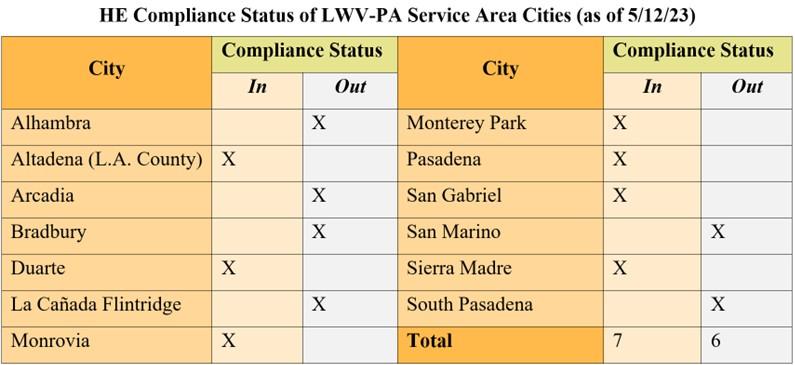
Rent Control
The effort to bring rent control, just-cause eviction protections, a rental registry, and a rental housing board to Pasadena came to a great conclusion on Election Day, November 8, 2022: Measure H was decisively passed by the voters, and subsequently the Pasadena City Council has appointed the housing board and allocated funding to start its activities. Eventually, fees paid by landlords will recover the advanced funding and make the board’s activities self-funding. In the meantime, the California Apartment Association has launched a second lawsuit (the first largely failed) to declare the charter change invalid.
An overwhelming amount of credit for the passage of Measure H goes to the Pasadena Tenants Union, which held together a coalition of local organizations, including LWV-PA, to get out the vote.
As a result of efforts to keep folks in their homes during the pandemic, the need for rental relief and the lack of affordable housing has been made even more evident. Communities across L.A. County have imposed rent increase controls and/or just-cause eviction protections.
Housing Elements
California state law requires communities to develop master plans, including highly prescriptive housing elements (HEs), and to update them every eight years. The HE needs to meet the requirements of the Affirmatively Furthering Fair Housing law, for building the number of housing units determined by the Regional Housing Needs Assessment, and for zoning and building changes required to make all those things happen. A researched list of potential building sites and the number of units they can accommodate must be included.
In the past there were no serious consequences for not getting the California Department of Housing and Community Development (HCD) to approve a HE, but legislation has been passed that puts some new teeth in the law. If a city fails to gain HCD approval of the HE, the city becomes ineligible for some affordable housing funding. That makes it much harder to build affordable units. It also enables builders to propose and build projects that are much larger than usually allowed by local zoning codes—the “builder’s remedy.”
It took Pasadena five drafts to get approval of its HE. Some of LWV-PA’s other service area cities did better, while others still don’t have approval. Those service area cities in and out of compliance as of May 12, 2023, are itemized in the table. The lack of approval may have serious consequences: In La Cañada Flintridge, for example, a developer is exploring its rights under the new rules.

LWVC Housing and Homelessness Task Force
Anita Mackey has joined the LWVC Housing and Homelessness Task Force and has been attending its Zoom meetings. Many Leagues across the state, urban and rural, are working on housing and homelessness issues. Some of the members analyze legislation and help determine which bills the state League will work on. They are asked to figure out which three or four bills are worthy of backing and don’t have other champions that will take them over the finish line.
Legislation
If you are interested in what the state legislature is working on to address the housing and homelessness crisis, the Terner Center for Housing Innovation at the University of California, Berkeley, has assembled a list of the bills that met the deadline for consideration in this session: Click here.
—Anita Mackey, Housing Subcommittee